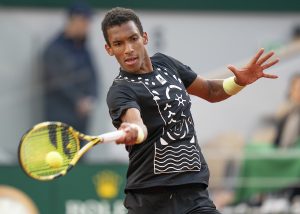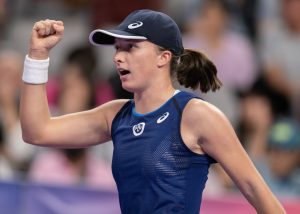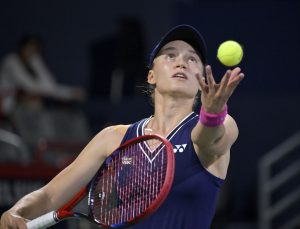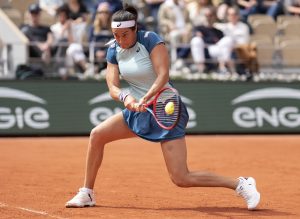The ATP Finals, which starts next weekend, has found at least a semi-permanent home at the O2 Arena in London. The ATP’s contract with the venue was extended this year until at least 2020, and many tennis writers and fans have called for the tournament to be staged permanently at the venue, where it has been such a success for nearly a decade now. However, even a brief examination of the history of the event suggests that it will not be long before it returns to its previously peripatetic nature and begins moving around the world once more.
The ATP Finals has had several homes and several different guises since it was first staged in Tokyo in 1970. The first edition of the tournament (indeed, the first two editions) did not even have a final as such but instead consisted of a “round robin” event (rather like the first round of the tournament now). Everyone played everyone (there were only six players in all), and the man who won the most games was declared champion. The first ever champion – the winner of “the Pepsi-Cola Masters” as the event was initially called, in deference to its title sponsor – was the great American, Stan Smith, who had yet to win either of his two Majors, the 1971 US Open and, unforgettably, the 1972 Wimbledon title, in which he defeated Ilie Nastase in one of the greatest ever Wimbledon men’s finals. Indeed, Smith was actually on the verge of being called up to the US Army for National Service when he won in Japan, which is a reminder that in 1970 tennis was only just emerging from the old amateur era after the sport had gone “Open” (or fully professional) in 1968.
Smith defeated Rod Laver in the first ever tour finals event, but the next five years, during which the tournament moved around annually (it was staged successively in Paris, Barcelona, Boston, Melbourne and Stockholm), effectively belonged to Ilie Nastase. He won it three times in a row between 1971 and 1973, on the first two occasions beating Smith (first by virtue of winning more matches than him in the “round robin” event and then by winning the first ever final proper in 1973). Given that Nastase lost the aforementioned 1972 Wimbledon final as well as three Davis Cup finals in four years between 1969 and 1972 to Smith’s USA team while playing for Romania, it must have been a blessed relief for him to best Smith in any tournament, even if it was the tour-ending tournament rather than a Major. For good measure, Nastase was runner-up in 1974 to Argentinian great Guillermo Vilas before winning for a fourth and final time in 1975, when he beat the young Bjorn Borg in the final.
The tournament finally found a permanent (or at least semi-permanent) home in 1976, when it was staged in Houston. The first final in Texas was played out between the relatively unheralded Manuel Orantes of Spain and Wojtek Fibak of Poland, who between them could boast only one Major win (Orantes’s US Open victory the year before). However, for the remaining six years that the tournament was staged in Houston, the final featured at least one, if not two, of the four greatest players of the era – Borg, McEnroe, Connors and Lendl – as it finally became a fittingly competitive and high-profile conclusion to the men’s season. Between 1977 and 1982, Borg and Lendl both won the event twice, while McEnroe and Connors won it once each.
For the rest of the 1980s, the “Masters,” as it was now known (the “Pepsi-Cola” having been dropped from the title), remained in America, moving from Houston to what at the time was probably the spiritual home of US sport, New York City’s Madison Square Garden. In the 1970s, the “Garden” had staged some of the great heavyweight fights of the era, including the first two of the trilogy of legendary fights between Muhammad Ali and Joe Frazier, and it had even seen the New York Knicks basketball team (for whom it was their home court) win their only two NBA titles in 1970 and 1973. Between 1983 and 1989, however, the “Garden” belonged, at least at the end of each calendar year, to the Masters of tennis. Native New Yorker John McEnroe won it twice more (in 1983 and 1984); Ivan Lendl claimed a hat-trick of titles (between 1985 and 1987); and at the end of the decade Boris Becker and Stefan Edberg both won the event once each, as they finally replaced McEnroe, Lendl and Connors at the top of the men’s game.
Despite the undoubtedly successful staging of the event in New York (Madison Square Garden was the venue most associated with the tournament until its current incarnation at the O2 Arena began in 2009), the event moved again in 1990. Indeed, throughout the 1990s it was staged in Germany, first in Frankfurt (between 1990 and 1995) and then in Hanover (between 1996 and 1999). In part, this was because of the extraordinary rise of German men’s tennis, which had begun with Boris Becker’s first Wimbledon win in 1986 and been sustained into the 1990s by both Becker and Michael Stich. Both the great Germans won the event on home soil, with Becker winning twice (in 1992 and 1995) and Stich claiming a solitary triumph (in 1993). Nevertheless, they did not have it all their own way, as the equally great (if not greater) Americans, Pete Sampras and Andre Agassi, also won the tournament in the 1990s (Sampras four times and Agassi once).
At the start of the new millennium, the tournament, which in 1990 had been taken over by the Association of Tennis Professionals (ATP) and officially (and rather grandly) renamed as the ATP Tour World Championship, went on the road yet again. First, it went to Lisbon (in 2000, when Gustavo Kuerten won), then to Sydney (in 2001, when Lleyton Hewitt won on home soil), and finally to Shanghai (in 2002, when Hewitt again won). It actually returned to Houston for two years (in 2003 and 2004, both times being won by Roger Federer as he began his golden age of dominating men’s tennis), before going back to Shanghai for four more years (between 2005 and 2008, during which Federer won it twice more), before finally finding its current home in London in 2009.
Even this brief examination of the history of the ATP Finals (the tournament was officially the “ATP World Tour Finals” between 2009 and 2016, before its title was further contracted to just “the ATP Finals” last year) shows how it has been something of a travelling circus for the near half-century that it has been in existence. However, tennis, like any sport, really thrives in its iconic venues, the permanent settings for its greatest events (the Majors) and consequently there has been much lobbying, not least by the O2 Arena itself, for London to become the permanent home of the season-ending event. Equally, several players, notably Novak Djokovic, have argued that it should not have just one “home” but should rotate between different cities and even different continents, as it has for much of its history (and this despite Djokovic himself being utterly dominant at the O2, winning four times in succession between 2012 and 2015).
Whatever the future holds for the ATP Finals, and wherever it is held, it is now firmly established as the definitive season-ending event on the men’s tour, with only the Davis Cup (a team event, of course, rather than a singles event) following it before the end of the season. Given that 2017 has been the year of the “double comeback” on the men’s tour, with both Roger Federer and Rafael Nadal winning two Majors apiece, it would be wholly fitting if the two greatest male tennis players ever met in the 2017 final, to decide who has the final bragging rights at the end of this most extraordinary year.






